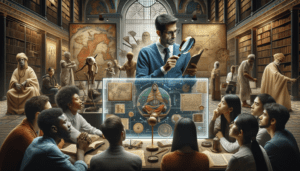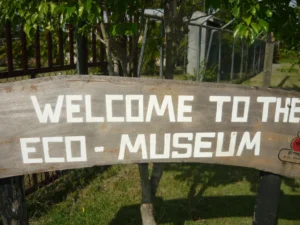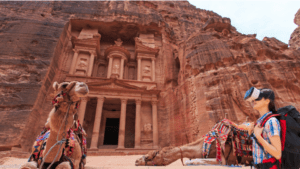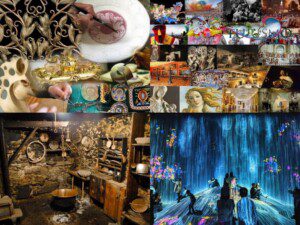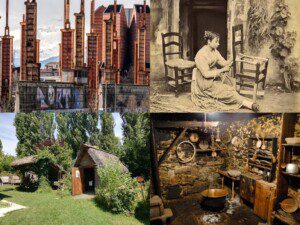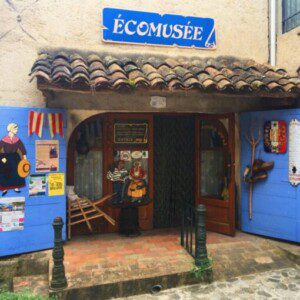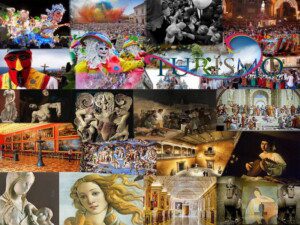Origins of the concept of Heritage Interpretation
by Ignazio Caloggero
Reference Page: Special Heritage Interpretation (Heritage Interpretation)
"I had only gone out for a walk, but in the end I decided to stay out until sunset, because going out, as I had discovered, actually meant going in". (John Muir)

Theodore Roosevelt with John Muir – Yosemite Valley, California, ca. 1906.
It was in the United States, towards the middle of the XNUMXth century, that what was called "Environmental Interpretation" was born, thanks to the growth of interest in the problems of protecting the natural heritage which would lead to the creation of the first national park in the world, the Yellowstone National Park, established by President Ulysses Grant in 1872. Other national parks would follow Yellowstone before the end of the XNUMXth century: Sequoia National Park (1890) Yosemite National Park (1890) and Mount Rainier National Park (1899)
Sensitivity towards the protection of natural heritage was favored by the development of philosophical and poetic movements such as that of American Transcendentalism, which included charismatic figures such as Ralph Waldo Emerson (1803-1882) and his friend and disciple Henry David Thoreau (1817-1862).
Another charismatic figure was soon added to the first two, John Muir (1838 – 1914) naturalist and conservationist, founder of Sierra Club, first American environmental association e Enos Abijah Mills (1870-1922) environmental guide and interpreter
And it is precisely in this cultural context that the first forms of environmental tourism began to spread in the second half of the 1864th century thanks to the spread of the first protected natural areas in the world, including Yosemite Park (1890) which later, in XNUMX, became National.
The first interpretative practices in terms of actual services of "Storytelling" understood as "the art of telling people about the wonders and attractions of a geographical area, or giving them information and provocations about a place so that they can enjoy it more fully"[2] take place in this cultural context, in the first national park in the world, that of Yellowstone.
So the concept of Interpretation was born in the environmental sphere and only later was this concept seen in a broad sense, identifying the entire Cultural Heritage as a sphere.
In 1916, the year in which the National Park Service (NPS) was established, reporting directly to the Ministry of the Interior, there were already 15 national parks:

Among the main players that gave rise to the concept of Interpretation we should mention: John Muir (1838-1914), Liberty Hyde Bailey (1858-1954), Enos A. Mills (1870-1922) and Charles Matthias Goethe (1875-1966).
Even if Freeman Tilden (1883-1980) is traditionally recognized as the father of environmental interpretation, at least as regards the formal aspects, thanks to the publication of the book "Interpreting our heritage" which took place in 1957.
Other authors, in the following years, have begun to deepen the theories and interpretative techniques contributing, thanks also to the publication of their works, to the definition of the current interpretative schemes: Sam Ham, Larry Beck, Ted T. Cable, John A Veverka, Giovanni Netto and Martha Brunelli.
2. Marta Brunelli: Heritage Interpretation – Eum University of Macerata editions – 2014 Note 2 on page. 38
To learn more about the topics covered in this article:
Experiential Pathways and Cultural Heritage Interpretation Vol. 1: Origins and Theoretical Principles (free downloadable volume)
SPE100 Basic Course: Introduction to Experiential Pathways (25 hours online) (course usable within the project "Experiential Tourism and Interpretation of Cultural Heritage")
Basic Course SPE101: Principles of Interpretation of Cultural Heritage (Heritage Interpretation) (30 hours online) (course usable within the project "Experiential Tourism and Interpretation of Cultural Heritage")
Featured training
Basic courses
Thematic courses on the Design of Experiences
Courses with Professionalizing Certification pursuant to Law 4/2013





